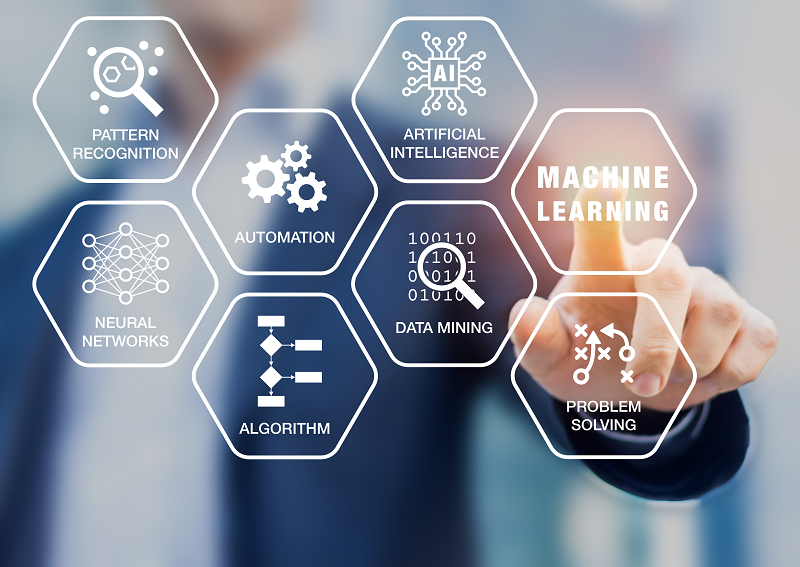
Intelligent Process Automation: Understanding the Differences Between Automated Robotic Processing, Machine Learning and Artificial Intelligence
One reason that businesses move to ERP is for intelligent process automation. But this can be a nebulous term, often combined with vague buzzwords such as automated robotic processing, machine learning and artificial intelligence.
So let’s get more specific about what intelligent process automation is, how it works, and why ERP is an essential component to make it happen.
What is Intelligent Process Automation?
Intelligent process automation is automation that goes beyond brittle, fixed rules that are defined at the beginning during setup.
Automation before the advent of AI was fixed and procedural. Step one was defined, then step two, et cetera. If-then statements might be added to bring some low-level decision-making (and complexity that easily breaks), but fundamentally it was automation as a set of rigid steps a computer would perform. Most businesses know this form of automation, and it has been around for decades.
Intelligent process automation, on the other hand, uses AI for human-like learning and decision-making during automation. This AI might interpret data and apply the correct next step, or in some cases even define the automation process entirely. It takes the rigidity and the brittleness out of automation, hence the word “intelligent.”
Getting to intelligent process automation combines three core technologies, each taking the level of intelligent automation a step further.
- Automated Robotic Processing. Automation occurs with the help of digital triggers through automated robotic processing.
- Machine learning. Automation gets prescriptive analytics and a decision-making engine through machine learning.
- Artificial Intelligence. Automation adds deductive analytics through artificial intelligence.
Understanding Automated Robotic Processing
Automated robotic processing, also known as robotic process automation (RPA), is what most of us understand automation to be today. RPA performs highly logical tasks that don’t require human decision-making through pre-defined logic and digital inputs.
One example of RPA is automatically entering data from a connected device into a spreadsheet, then applying calculations, formatting the data and generating a report based on a trigger such as the day of the month.
Automatic robotic processing is best suited for any task that has clear conditions and a logical procedure. It doesn’t learn or handle variance very well, but it can automate any routine task that is clearly defined and consistent.
Why Are Businesses Automating and What Is the Benefit?
Understanding Machine Learning
Intelligent process automation starts to happen with machine learning, which is a subset of artificial intelligence and combines technologies such as deep learning, neural networks and natural language processing. Machine learning is RPA with intelligence.
The way machine learning works is by using structured and semi-structured historical data to both learn and make predictions without explicit programming. So while RPA requires rules to run automation, machine learning can make its own rules just as a human might. This can automate automation creation and enables automation that is less rigid and strictly rules-based.
Two examples of machine learning-based automation are financial forecasting and predictive maintenance. Machine learning can take prior financial data and generate a financial forecast for the next quarter automatically if there is enough data to work from. Machine learning-based automation also can be used for predicting and flagging when equipment likely needs repair.
Machine learning takes RPA one step forward by going beyond procedural automation. It is useful for training classification systems, classifying documents, extracting information from documents, and making judgements. But what it can’t do is design its own systems and figure out the right way to perform a task.
Understanding Artificial Intelligence
Artificial intelligence uses machine learning, but it adds deductive reasoning to automation. So AI automation can take any type of data, and on its own determine the best way to perform a task. While machine learning can make judgements such as classification, AI encompasses the full scope of what a business might expect from an employee. It can build and automate entirely on its own without the need for human involvement.
While automated robotic processing is procedural and machine learning removes the rigidity, AI can make sense of information patterns and both correlate the data and decide how to act upon it properly. AI is the basis of complex, decision-driven automation. AI can acquire information and contextual rules, make conclusions based on analyzing the data, and self-correct as it goes along.
An example of AI-based automation is sentiment analysis as experienced any time a person interacts with an automated assistant such as Apple’s Siri, and self-driving mode on a Tesla.
While still hitting its stride, AI is the holy grail of automation. Services such as Siri and self-driving vehicle automation show that this level of automation already has real-world applications today.
Why ERP is Needed for Intelligent Process Automation
Data and connectivity is central to intelligent process automation. Complex automation driven by AI requires access to a wide range of real-time and historical data. Simple automated robotic processing also requires access to data for procedural decision-making.
This is where ERP comes in. An enterprise resource planning solution (SAP Business ByDesign ) serves as the nerve center for a business, a single system that houses all of a company’s data. To automate intelligently, there needs to be a single source of truth. ERP provides that.
Businesses also need always-on, anywhere access to this data for intelligent process automation and AI-involvement. A modern, cloud-based ERP system delivers this essential functionality as well, connecting smart devices, shop floor robotics, backend databases and AI engines to enable these higher forms of automation.
For more on ERP and its essential role in automation, download our free guide, Understanding Cloud ERP for Non-IT Executives, or contact one of our experienced consultants at (801) 642-0123.